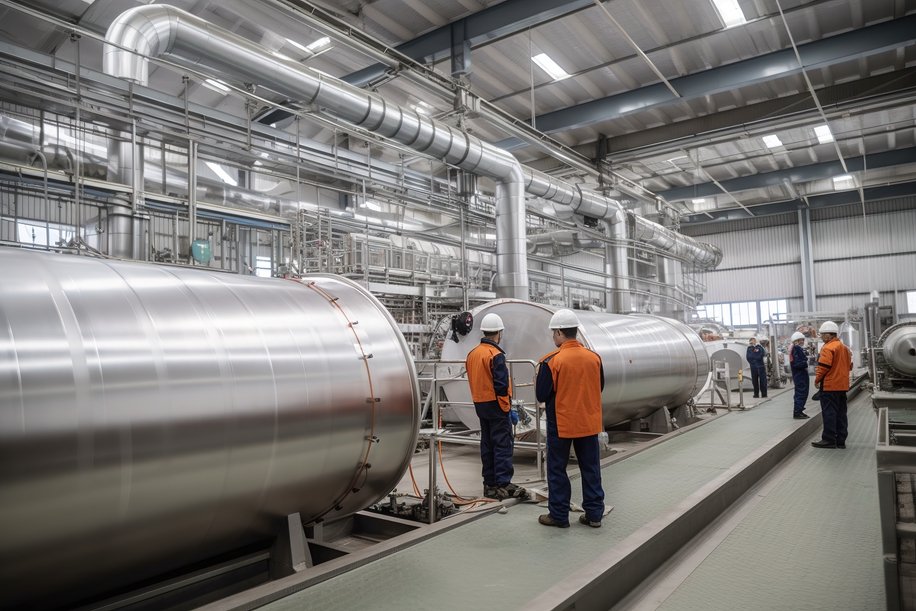What is Power Factor Correction?
Power Factor Correction (PFC) is the process of improving power factor (and, therefore, power quality) by reducing the reactive power component of an AC circuit.
Power factor measures how efficiently your electrical power is being used. It looks at the ratio between real power and reactive power to determine total power drawn by a single item of AC electrical equipment or a complete electrical installation.
The ideal power factor is one (sometimes referred to as unity). A power factor of less than one indicates that extra power is being used to achieve the task at hand and, therefore, electricity is being wasted.
PFC aims to correct this by reducing the load on the electrical distribution system and increasing energy efficiency, which can help reduce costs. It also decreases the risk of instability and equipment failure.
The most common way to achieve PFC is through the addition of capacitors in parallel to the load. Static PFC can be applied at each individual motor, at the distribution board, or at the origin of the installation.
The capacitors can automatically switch in or out of the circuit to counteract the inefficient negative effects of motors and machines.
Why PFC is beneficial to manufacturers
It’s common for industrial installations to operate at power factors between 0.7 and 0.8, which is poor. Correcting the power factor on your installations is beneficial for several reasons.
Improve energy efficiency: PFC can improve the power factor resulting in more efficient use of electrical energy. This can lead to significant cost savings on energy bills, especially if your factory consumes a large amount of electricity or you operate over multiple sites.
Stabilise voltage: PFC can help stabilise the voltage supplied to your facility, reducing the risk of damage to electrical equipment. This can save you money on maintenance and repairs, and improve the overall reliability of your machinery, reducing unplanned downtime or machine failure.
Reduce harmonic distortion: Harmonic distortions are common voltage and current variations caused by frequency changes within the electrical distribution systems. This can cause electrical equipment to malfunction and may shorten the life of your equipment. PFC can reduce harmonic distortion in the electrical current.
Improve power quality: PFC can improve the quality of the power supply, which is particularly beneficial if you use sensitive equipment. Better power quality leads to more accurate and consistent results from processes, which can translate to increased productivity and improved product quality.
Improve energy management: Many PFC units can measure, monitor and report power usage information. This information can be used to optimise energy and further reduce your costs.
Reduce carbon emissions: reducing energy consumption is not only good for your bottom line, it’s good for the environment too. If your machinery and equipment aren’t running efficiently, you’re unnecessarily wasting energy and increasing your carbon footprint. PFC reduces the amount of wasted energy, helping you reduce your carbon emissions.

Other energy-saving solutions
Along with PFC, there are other energy-saving solutions that can help you increase efficiency and reduce costs. These include:
Variable Speed Drives: Many motors, fans, and pumps have different processes which require them to run at varying speeds rather than a fixed speed. Variable Speed Drives (VSDs) convert the incoming electrical supply of fixed frequency and voltage into a variable frequency and voltage output to the motor, reducing energy consumption.
Voltage Optimisation: Electricity suppliers in the UK are allowed to provide electricity to commercial properties at 230v, with an allowed -5/+10% tolerance. This means the voltage input into a business is often much higher than required. Electrical equipment is designed to run at the most efficient levels, but poor control over the incoming voltage (and tolerances) reduces efficiency. Voltage optimisation manages the voltage coming in and ensures the correct voltage is used and distributed to maximise efficiencies.
Energy Efficient Motors: Switching out your old inefficient motors for more modern efficient ones can be a simple way to reduce the amount of wasted energy. Newer motors also have several additional benefits, such as generating less heat and offering significantly reduced noise output.
Low-Energy Lighting: Upgrading to low-energy lighting will significantly reduce your operational running costs and can often deliver a positive return on investment within three to five years. Movement sensors, daylight sensors, and automated lighting can further reduce operational costs by utilising lighting only when necessary.
Energy Storage: Battery Energy Storage Systems (BESS) are a great way to harvest green energy and off-peak energy to create your company’s own micro-grid. This puts you in control of your power supply, protecting against escalating energy prices and supply interruptions.
If you’re trying to reduce energy consumption in your factory, any or all of the above solutions could help you make significant cost savings and reduce your carbon emissions.
Get started with our free energy reduction audit
At AES, we specialise in providing electrical services to manufacturers with a focus on energy reduction and will help you select the best solutions for your factory.
We offer a free energy reduction audit to help you understand where you can make the most significant impact and which energy-saving solutions are right for you.
After completing our assessment, we’ll provide you with a full report detailing energy consumption savings and the real cost savings to your business.
Our goal is to help you reduce energy consumption in the most effective way so you can generate a return on investment as quickly as possible.
Contact us to find out more or book your free energy reduction audit.

Our guide to building energy management systems
Building energy management systems (BEMS) are systems that allow you to monitor, control, and optimise the energy used within your building. The phrase building energy management system (BEMS) is often used interchangeably with the phrase building management system (BMS), but there are some differences. A BEMS is focused on energy-related systems such as lighting, heating, […]
Read more
How far does power travel and what impact does distance have on performance
It’s easy to take our electricity supply for granted. We flick a switch and instantly have light or power. We don’t even think about it unless there’s an issue or an outage. But when there is an issue or outage, the impact can be significant. For manufacturers, even the smallest change in power can make […]
Read more
Why visibility of the production process is so important
Operational excellence, efficiency and quality are top priorities for almost every manufacturer worldwide. These things lead to improved productivity, happier customers and reduced waste – all of which result in increased profits. Visibility of the production process is the key to achieving these things. And manufacturers now have access to technology that can provide real-time […]
Read more
Will security lighting help to protect my staff?
Looking after the safety and well-being of employees should be a priority for any business. And while it’s not possible to mitigate every risk, there are measures you can take to improve their safety and security. One measure that is often overlooked is the installation of security lighting. When daylight disappears, visibility is reduced, increasing […]
Read more
Top 5 considerations when comparing electrical quotes
Budget is always a factor when you’re considering any type of upgrade, revamp, or maintenance work within your factory. But when it comes to electrical work, you have to consider more than just money. Don’t rush into accepting the cheapest electrical quotes without knowing exactly what you’re getting. Electrical work is not an area where […]
Read more
What is the role of companies in reducing our carbon footprint?
We should all be taking responsibility for protecting our planet and a big part of that is reducing our carbon footprint. But while it falls to all of us to do our bit, there is additional pressure on manufacturers, especially those with high carbon emissions. As an absolute minimum, these companies should ensure compliance with […]
Read more

